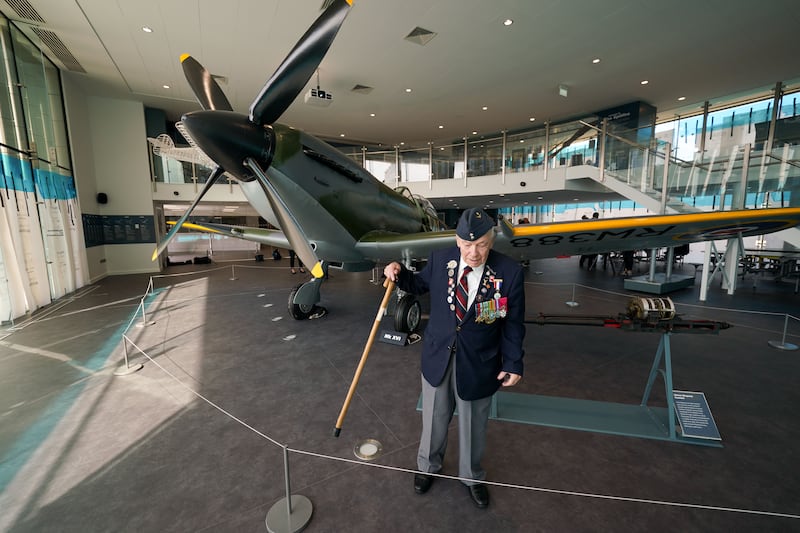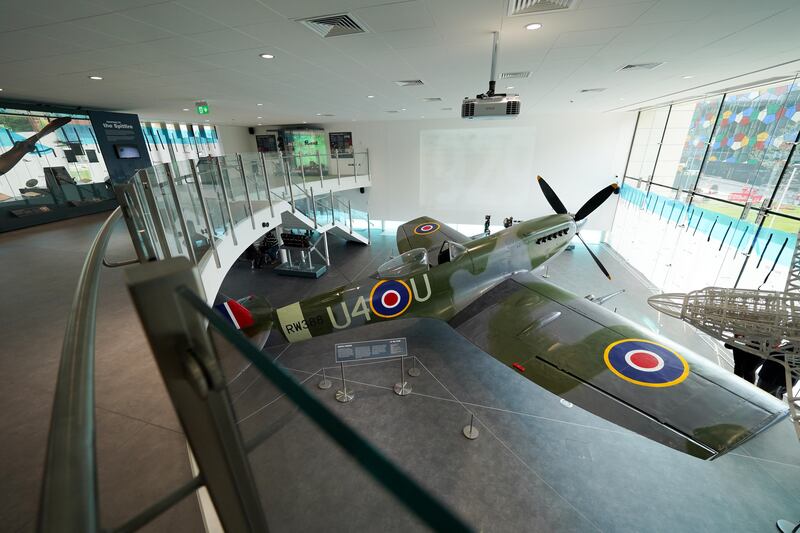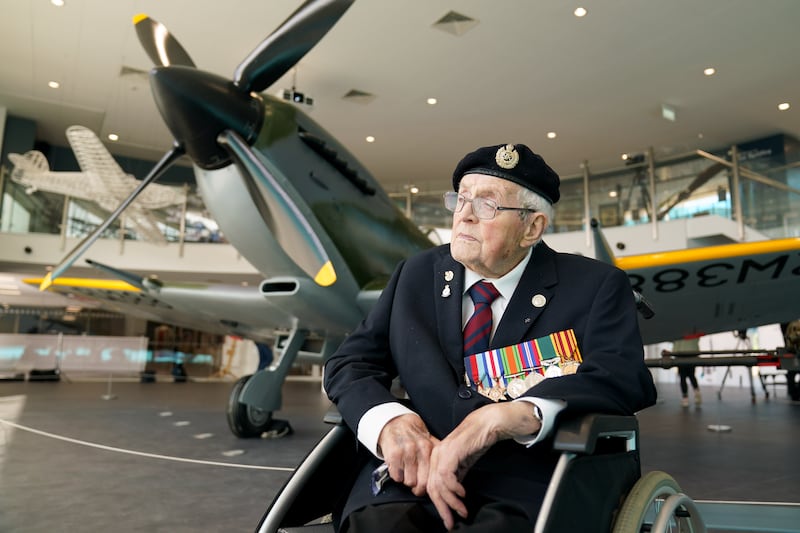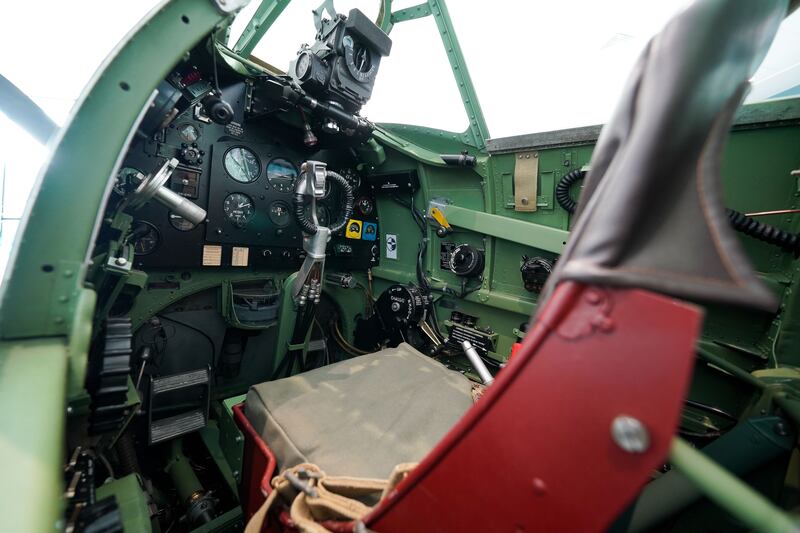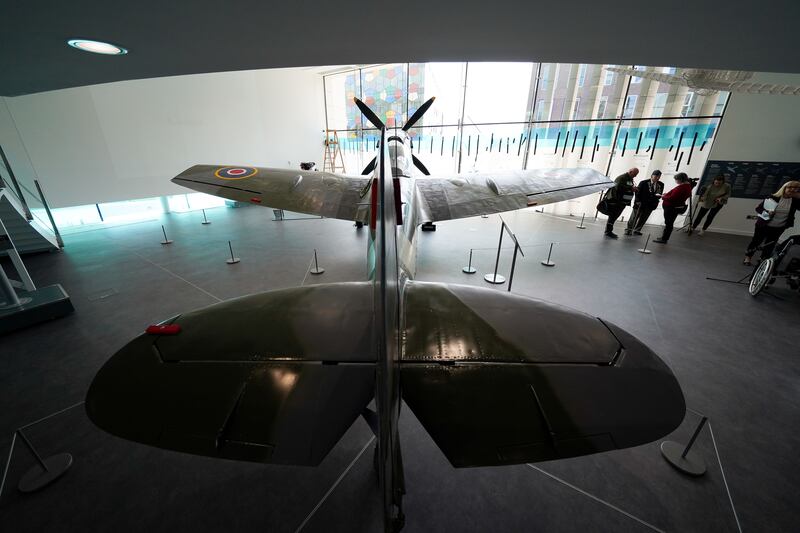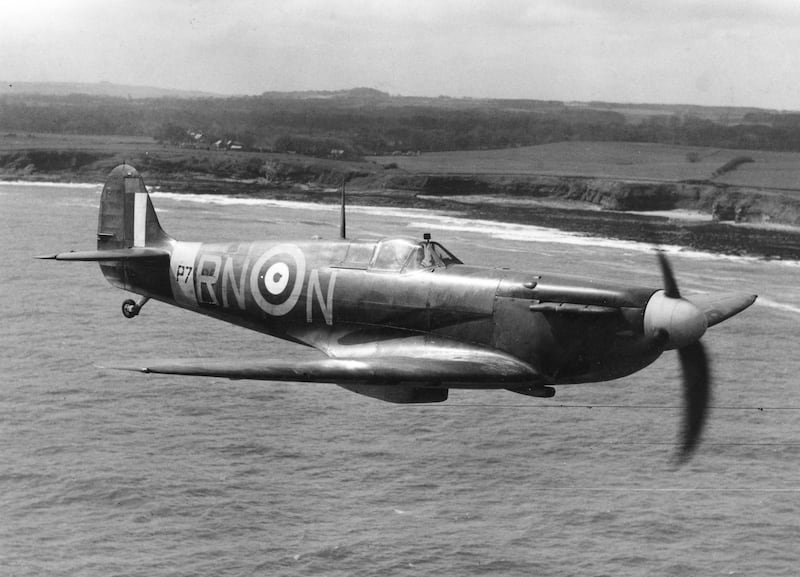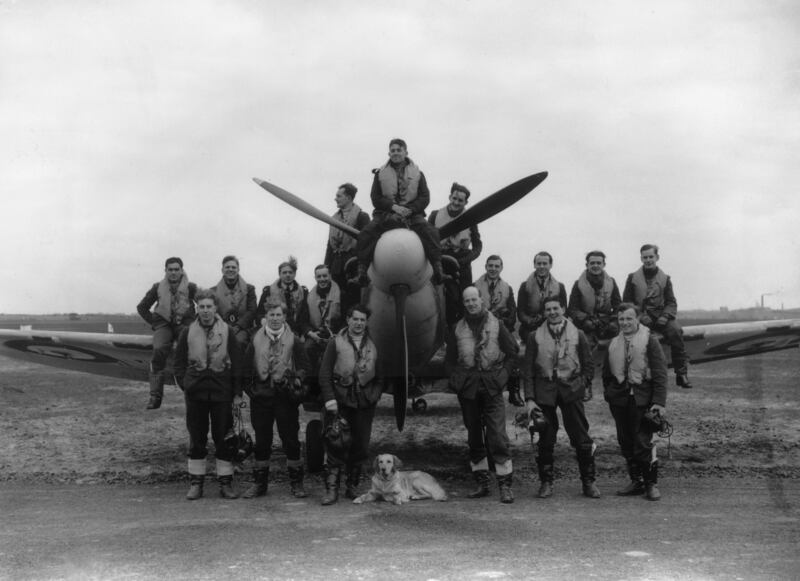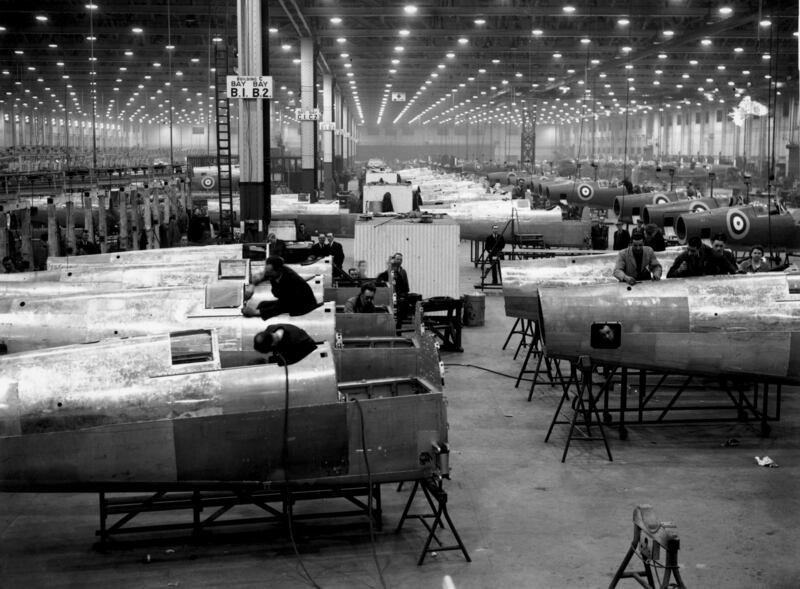A fully restored Spitfire was on Wednesday unveiled as the new centrepiece of the UK's Potteries Museum & Art Gallery in Stoke-on-Trent.
The aircraft will be unveiled in a 355-square-metre extension to the museum, which cost £5.4 million ($7.4m).
Its return to the Staffordshire city looks set to thrill museum attendees, both young and old.
The Spitfire RW388 was originally donated to the city in 1972 in recognition of its links with the designer of the warplane, Reginald Mitchell.
Having been sent to the workshops of Medway Aircraft Preservation Society in Kent for over three years, the plane returned to the museum in July.
It arrived in four pieces: the fuselage, tail and the two wings. Each was craned on to the new cafe terrace and wheeled into the building, under the careful supervision of a team from the RAF Museum. It was then reassembled in the new gallery.
The Mark XVI Spitfire, built at Castle Bromwich in Birmingham in May 1945, saw service in Germany shortly after the Second World War and last flew in 1952, when it was damaged during take-off at RAF Middle Wallop in Hampshire.
It was then used as a “gate guardian” at RAF bases before being donated to Stoke-on-Trent in honour of Mitchell, initially going on display in a large greenhouse-type structure on the city’s Bethesda Street.
Mitchell’s great-nephew, Julian Mitchell, said he could remember being taken as a small child to the earlier ceremony in June 1972.
“I am delighted that it has come back restored to how it was when I first saw it," Mr Mitchell, whose great-uncle died aged 42 in 1937, told PA.
“The plane means a lot to the people of Stoke-on-Trent. I think it means a lot to the people of the country and it’s a symbol of hope, the Spitfire.”
He said that the aircraft and its gallery would inspire visitors to think about the possibilities in engineering.
“There’s a massive skills gap in engineering and we need to do something to plug that gap," Mr Mitchell said.
“We want people to see how their future could be in engineering, and also tell the story of Reginald Mitchell the local boy, educated locally, born locally, apprenticed locally, who then went on to create the most beautiful aircraft that ever was built, that ever flew, and helped save the country in its hours of greatest peril.”
He said the Spitfire had shortened “clipped” wings and an engine tuned for lower altitudes.
“It’s been situated looking out so that as you drive down Broad Street, you can see between the buildings and you’ll be able to see it, particularly at night when it will be lit up," Mr Mitchell said.
“It is here, as a symbol of hope, of inspiration, and really something that says to anyone who drives past ‘anything’s possible’.”
He said the Spitfire had “endured” more than any other aircraft. The sight of one in flight was “a wonder to behold” and the sound of the Rolls-Royce Merlin engine unmistakable.
Before the official unveiling, Second World War veteran Norman Lewis, 102, was given a sneak preview of the restored Spitfire, which he said was a “wonderful” sight.
Mr Lewis, from Meir, Stoke-on-Trent, was captured in June 1940 in France while serving with the Royal Engineers.
He said that he had spent five years as a prisoner of the Germans, before escaping and returning home through Odessa, Turkey, Egypt, Italy and Gibraltar.
“I covered 10,000 miles in three months and I arrived home on April 1, 1945," Mr Lewis said.
"Some good news was, when I got to Egypt they told me I’d got five years back-pay to pick up, which was wonderful.”
The Spitfire spent three years in a workshop at an airfield in Kent, where it was restored, before being taken back to north Staffordshire in June, with a crane lifting it into its new home.
The exhibition has been financed by £210,000 from a joint fund run by the Department for Digital, Culture, Media and Sport in partnership with the Wolfson Foundation.
Further funding of £47,000 was raised with help from Operation Spitfire, the Friends of the Potteries Museum and Art Gallery, and through visitors’ donations.
History of the Spitfire RW388
The Spitfire RW388 entered service too late to see combat in the Second World War, being first a training aircraft and later towing targets for Navy ships so they could aim their guns accurately.
In 1952 it was damaged in a flying accident and never flew again, instead becoming a gate guardian at RAF Benson and then at RAF Andover.
In 1968, marking the 50th anniversary of the RAF, RW388 was converted to appear at the Royal Tournament at Earl's Court in London and at the Edinburgh Military Tattoo. The aircraft was disguised to appear as Spitfire AB917, known as “The Inspirer”.
The aircraft is designated “LF”, which identifies it as a low-altitude fighter. Aircraft of this type were commonly fitted with the clipped wingtips which improve performance at lower altitudes.
Another distinguishing feature is its low back and “bubble” canopy. Earlier versions had a higher back.
